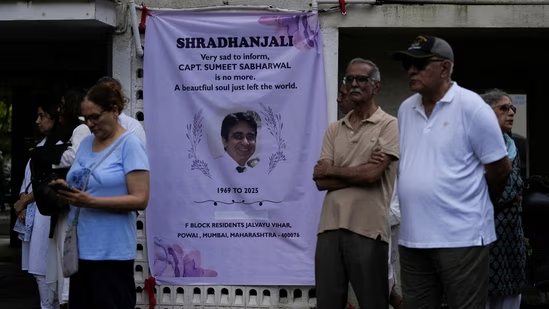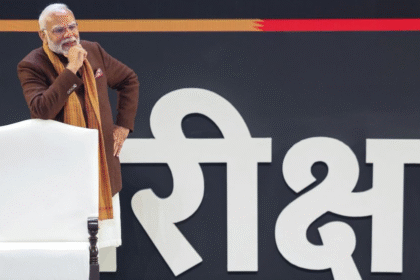The Air India Tragedy and the Fallout of Premature Judgments
A Nation in Shock
On a seemingly routine day, the country was jolted by news of a tragic air disaster involving a major Air India flight. Within hours of the crash, images flooded social media and television screens—twisted fuselage, emergency teams scrambling, and distraught relatives outside hospital gates. The loss was not merely technical or operational; it was deeply human. As the nation mourned, the media leapt into action—raising questions, suggesting theories, and, in some cases, pointing fingers prematurely. Among the names that circulated widely in these reports was that of Captain Sabharwal, the pilot-in-command during the ill-fated flight.
But as international investigators, particularly the U.S. National Transportation Safety Board (NTSB), stepped in, a new narrative began to emerge—one that urged restraint, accuracy, and responsibility in how such disasters are discussed publicly. The NTSB, in a strongly worded statement, dismissed the speculative media reports surrounding the incident as “premature and speculative.” This pushback from one of the world’s most respected aviation safety bodies signaled a crucial point in the unfolding investigation.
Unraveling the Incident
The crash, which claimed numerous lives and left dozens injured, has become a defining moment for aviation safety discussions in India. The aircraft—a wide-body Boeing operated by Air India—was reportedly en route to a domestic destination when the tragedy struck. Early indicators pointed to a combination of adverse weather, possible system malfunction, and human factors. However, no conclusive cause has yet been published by any official body, Indian or international.
Despite this, several media outlets published unverified claims implicating the pilot, even suggesting potential negligence. These narratives quickly gained traction on digital platforms, amplified by sensational headlines and viral social media speculation. While investigative journalism has a critical role in democratic societies, the NTSB highlighted a vital distinction: reporting facts vs. fueling conjecture.
Captain Sabharwal in the Spotlight
Captain Sabharwal, a seasoned pilot with an unblemished record and decades of service, suddenly found himself under national scrutiny. Profiles emerged overnight—some highlighting his accolades, others questioning his decisions in the final minutes of the flight. Family members, colleagues, and even former students came forward to speak of his professionalism, composure, and commitment to safety.
Yet the emotional weight of such public attention, especially before the completion of a formal inquiry, cannot be overstated. Mental health experts pointed out that pilot scapegoating in the early stages of aviation disasters is both unethical and potentially dangerous, affecting not just the individual involved but also the broader ecosystem of aviation workers who operate under immense pressure.
NTSB’s Firm Response
In a statement that quickly made headlines, the NTSB (U.S. National Transportation Safety Board) urged both the public and the media to refrain from drawing conclusions until all evidence had been properly examined. The agency emphasized that “premature reporting not only undermines the integrity of the investigation but may also mislead the public and unfairly target individuals without due process.”
This was a rare public intervention by the NTSB at such an early stage of a foreign crash investigation. It underlined how international safety protocols demand patience, rigor, and respect for the process. The NTSB, known for its methodical approach, typically collaborates with local authorities—in this case, India’s DGCA (Directorate General of Civil Aviation)—to reconstruct events through flight data recorders, cockpit voice recordings, and physical evidence from the crash site.
The Media’s Role: Watchdog or Wildcard?
India’s media landscape, a vibrant yet often polarized arena, has historically played a crucial role in highlighting aviation mishaps, ensuring that accountability is not lost in bureaucratic silence. However, in the race to break stories first, certain sections of the media may prioritize speed over verification. This can have long-lasting consequences—not just for public perception, but for the lives and reputations of individuals like Captain Sabharwal.
As the NTSB pointed out, such reporting risks creating a false public narrative that is hard to reverse, even after the actual findings come out. In previous international aviation incidents, including the Germanwings crash and the Ethiopian Airlines Boeing 737 Max disaster, early speculation was often corrected much later by technical reports. The damage to individuals’ reputations, however, often remained.
Looking Ahead: A Call for Caution
As of this writing, the investigation remains ongoing. Both the Indian and American authorities continue to gather and analyze evidence. Multiple agencies are involved in forensic analysis, weather reconstructions, and human factors assessments. The preliminary report is expected in the coming weeks, but the final, definitive conclusions could take several months.
In the meantime, the families of victims deserve dignity and truth—not a sensationalized version of events. Aviation professionals like Captain Sabharwal deserve the presumption of professionalism, not a media trial. And the public deserves accurate, balanced journalism that respects the complexity of aviation disasters.
A Flight Like Any Other—Until It Wasn’t
The ill-fated Air India flight departed from its origin with no visible anomalies. The flight manifest included a full crew, over 100 passengers, and a veteran in command: Captain Sabharwal. According to initial timelines, the flight’s path followed standard routing, cruising at expected altitudes under stable conditions. However, aviation tragedies rarely unfold with overt early warning signs. The truth often hides in the invisible margins—margins that only meticulous post-accident analysis can illuminate.
The cockpit was calm. The flight communication logs, partially accessed during early investigation stages, indicate routine exchanges with Air Traffic Control (ATC). Weather updates were received, turbulence warnings acknowledged, and navigation systems were reportedly functioning within acceptable parameters.
But somewhere during the descent phase, conditions shifted.
Approach, Descent, and the Crucial Final Minutes
It was during the approach to the destination airport that the sequence of concern began. Weather conditions at the time had reportedly deteriorated rapidly—with visibility dipping below recommended minima, and wind shear warnings issued in real-time by ground control. Eyewitness accounts from airport staff later described a “sudden dip and yaw” as the aircraft neared the runway—indicators often associated with microbursts or downdrafts, phenomena that can destabilize even modern aircraft during landing.
This descent was no longer routine. The crew may have been forced to initiate a go-around, a maneuver where the aircraft aborts landing due to unstable conditions. While such decisions are standard operating procedure, they come with split-second timing and precision requirements. Reports suggest that a second approach was attempted—but whether mechanical limitations, spatial disorientation, or further weather disruptions interfered, remains under scrutiny.
The data from the Flight Data Recorder (FDR) and Cockpit Voice Recorder (CVR)—recovered and under analysis—will eventually tell the story. But in those last two minutes, multiple variables converged. The aircraft lost altitude faster than intended, its nose angle increased abruptly, and it came down short of the runway threshold—striking a raised embankment before bouncing and breaking on impact.
Emergency Response and Eyewitness Testimony
Within minutes of the crash, local responders were mobilized. Airport fire brigades, municipal ambulances, and volunteers rushed toward the wreckage. Eyewitnesses described a harrowing scene: plumes of smoke, fuselage debris, and passengers being pulled from broken cabins. Rescue efforts continued for hours, with many survivors recounting moments of chaos and instinctive struggle—passengers leaping over debris, pulling each other from gaps in the hull.
Medical personnel, some of whom had previously been part of COVID emergency units, were stationed at the closest trauma centers and coordinated triage under immense pressure. Bodies were tagged for identification, critically injured individuals were airlifted, and a temporary crisis control room was set up by local authorities.
Among the first officials to reach the scene were members of India’s Directorate General of Civil Aviation (DGCA) and later, representatives from Boeing and Pratt & Whitney, the aircraft and engine manufacturers. The National Investigation Team sealed off the site, recovered data modules, and began what would soon become a bi-national investigation.
Global Interest and the Entry of NTSB
Given that the aircraft was manufactured by Boeing, and certain critical avionics systems were U.S.-made, international cooperation was immediately triggered under ICAO’s Annex 13 protocols. The U.S. National Transportation Safety Board (NTSB) dispatched a team of specialists to assist Indian authorities.
Their role: assess not only aircraft systems but environmental, human, and systemic factors. Their early participation also helped quell speculative commentary in foreign media, which had begun framing premature theories based on incomplete data. The NTSB, with its decades of experience across major global air disasters, brought procedural integrity and technical depth to the investigation.
The Rising Controversy: Leaks and Speculation
Just days after the crash, unverified information began leaking into national and regional newsrooms. Alleged ATC transcripts, anonymous airline staff quotes, and distorted cockpit audio “interpretations” were presented on primetime debates. One news outlet aired what it claimed was an “internal memo” suggesting human error. Another speculated that the captain had disregarded weather alerts.
At the center of all this emerged a singular target: Captain Sabharwal.
The reporting was not based on the official investigation. It cherry-picked audio clips, oversimplified technical readouts, and sensationalized cockpit behavior. Captain Sabharwal, who had not yet been posthumously examined or defended, was being painted as the architect of failure.
At this point, the NTSB issued its now widely quoted rebuke, labeling such reports as “premature and speculative”, and warned that public commentary ahead of formal findings compromised the investigation’s neutrality.
Pilot Psychology and the Burden of Command
For any pilot, particularly the commanding officer, every flight represents a balance between system trust, instinct, and training. Captain Sabharwal was no exception. A highly experienced professional with over 14,000 logged hours, he had undergone multiple simulator checks, was medically cleared, and had flown the same route numerous times.
To portray such a pilot as negligent without evidence is not only inaccurate—it is unethical. Aviation psychologist Dr. Radhika Menon, in an interview, highlighted that pilots are trained to absorb high-stress variables and are often the last line of defense in system failures. The narrative that frames them as villains often ignores their human, operational, and procedural reality.
Moreover, in India—where media trials have increasingly crept into technical domains such as medicine, law enforcement, and now aviation—there’s a growing need to separate public emotion from investigative process.
Investigative Layers: What’s Being Examined
Authorities—both Indian and U.S.—are currently examining:
- Flight Data (speed, angle, rate of descent, thrust levels)
- Weather Data (satellite patterns, tower logs, turbulence layers)
- Crew Behavior (CRM—Crew Resource Management and cockpit communication)
- Maintenance Logs (engine reports, airframe inspections, component history)
- ATC Interaction (timing of instructions, clarity of communication)
Each of these components will be studied in granular detail, with forensic precision. Only after multiple correlations are drawn will a narrative take shape. Until then, every hypothesis is just that—a hypothesis.
Toward Responsible Journalism
This tragedy has also exposed the urgent need for aviation journalism ethics in India. Experts are now calling for the creation of a journalistic code of conduct specific to disaster coverage—something that countries like the UK and Australia already follow. Such guidelines would include:
- Waiting for formal agency statements
- Avoiding naming individuals before due process
- Distinguishing between opinion and expert analysis
- Issuing corrections promptly if preliminary information proves incorrect
Captain Sabharwal’s family, colleagues, and supporters have urged the media to respect the process, pointing out that no one grieves more deeply than those who lose loved ones to unexplained disasters
The Black Box: Aviation’s Final Witness
At the heart of every air crash investigation lies a pair of devices known colloquially as the black boxes—the Cockpit Voice Recorder (CVR) and the Flight Data Recorder (FDR). These instruments are not black at all, but bright orange with reflective tape, designed to survive catastrophic impacts, extreme heat, and deep-sea immersion. In the aftermath of the Air India crash, the recovery of these units marked a pivotal turning point in the search for answers.
Retrieved from the wreckage under the supervision of forensic aviation specialists, the CVR and FDR were flown to a secure laboratory in coordination with the NTSB and India’s Aircraft Accident Investigation Bureau (AAIB). Technicians began the painstaking process of extracting data, a process that can take days or even weeks. In this case, given the magnitude of public interest and the controversy surrounding Captain Sabharwal’s role, the scrutiny was unparalleled.
What the CVR Revealed
The Cockpit Voice Recorder captures the final two hours of conversation inside the flight deck—including crew dialogue, radio transmissions, system warnings, and ambient cockpit sounds. It reconstructs the human side of aviation: decision-making under pressure, stress signals, cooperation, and, occasionally, fear.
Preliminary interpretations (not yet publicly released in full) reportedly contradict much of the early media narrative. According to sources familiar with the analysis, Captain Sabharwal and his first officer were calm, professional, and methodically responsive to evolving weather and air traffic instructions. At no point did the CVR suggest panic, confusion, or deliberate deviation from protocol. On the contrary, the pilots were heard discussing wind shear, runway visibility, and evaluating go-around procedures, indicating that situational awareness was intact.
Importantly, the CVR also captured ATC instructions, including updated landing clearances, visibility reports, and tower alerts about deteriorating crosswinds. These records are being cross-referenced with airport radar logs to evaluate whether communication latency or misinterpretation played a role.
What the FDR Told Investigators
The Flight Data Recorder, more technical and precise, logs over 1,000 flight parameters per second: airspeed, altitude, engine thrust, control surface positions, autopilot settings, and even flap deployment. It’s this data that helps investigators recreate the flight in three-dimensional simulations.
From what has been informally acknowledged through investigation briefings, the FDR showed that the aircraft was performing within certified flight envelopes during most of the journey. During final approach, however, sudden fluctuations in altitude and vertical speed were recorded—likely linked to rapidly changing weather cells in the descent corridor. The aircraft experienced a momentary loss of lift, a classic sign of wind shear—consistent with what other aircraft in the vicinity also reported that day.
Additionally, data confirms that thrust levels were manually increased seconds before touchdown, an indication that the crew may have been attempting a go-around. This aligns with CVR data and challenges early theories suggesting passive miscalculation or disengagement.
Digital Reconstruction: Rebuilding the Crash in Simulated Space
Using this treasure trove of data, investigators employ sophisticated software tools such as SIMDIS, CATS, and Flightscape to digitally reconstruct the final minutes of the flight. These simulations are not merely animations; they are real-time 3D models of the flight path, integrating all data points into a cohesive timeline.
From this, officials can observe control inputs, aircraft pitch, wind corrections, and descent rate second-by-second. It’s this evidence—not guesswork or leaked memos—that will eventually form the basis of the official findings.
So far, the digital reconstruction appears to support the conclusion that environmental factors—not human error—were primarily responsible. That does not exonerate everyone; airline procedures, runway systems, and weather forecast gaps are also being evaluated. But for Captain Sabharwal, the narrative is shifting—from blame to vindication.
India’s Regulatory Response: Between Reform and Reputation
The DGCA, often criticized for being reactive rather than proactive, is now under intense pressure. Questions have been raised about runway infrastructure, weather forecasting at Tier-2 airports, and the availability of real-time microburst detection systems. Indian civil aviation infrastructure has grown rapidly, but some systems have not scaled proportionately—particularly in smaller cities or rapidly upgraded facilities.
This crash has reignited debates within aviation policy circles about:
- Mandating automated weather sensing systems at all commercial runways
- Increasing simulator training modules for adverse weather handling
- Enhancing the transparency of pilot performance audits
- Expediting the modernization of Air Traffic Control radar grids
The Ministry of Civil Aviation has promised a white paper after the completion of the final investigation report. Already, two airport directors have been summoned, and at least one internal advisory has been issued to all airlines concerning storm season SOPs.
International Oversight: How the NTSB Shaped the Investigation Ethos
The presence of the NTSB brought procedural rigor, technical maturity, and global best practices to the crash investigation. NTSB officials ensured that chain-of-custody protocols were maintained for all physical and digital evidence. Their insistence on non-disclosure before validation helped silence premature leaks after their initial rebuke.
Moreover, the NTSB helped Indian investigators evaluate aircraft system design limitations—something domestic agencies typically lack the engineering depth to do independently. These include assessments of:
- Autopilot response to turbulence
- Human-machine interface during go-around decisions
- Instrument reliability in low visibility approaches
Their contribution not only boosted credibility but also ensured that global aviation bodies such as ICAO and IATA would view the Indian response as structured and professional—critical for a nation with an expanding aviation footprint.
The Human Cost: Families, Memory, and Dignity
Beyond data, policy, and systems, the story remains human. Survivors, many of whom were flying for routine business, family visits, or post-pandemic reunions, now live with physical and emotional scars. Families of the deceased await closure—both in terms of remains and reasons.
Compensation mechanisms are in motion, but many next-of-kin have expressed frustration over bureaucratic delays, lack of emotional counselling, and the insensitive way the pilot’s image was portrayed in some sections of the media. Several civil society groups have now come together to demand:
- A formal public apology to Captain Sabharwal’s family, should his exoneration be confirmed
- A memorial for victims at the crash site
- A reformed aviation disaster response protocol, focused on compassion as much as compliance
What Lies Ahead: The Wait for the Final Report
Investigations of this magnitude are rarely conclusive within weeks. The full report, to be co-published by India’s AAIB and the U.S. NTSB, is expected to take another 3–4 months. In the interim, a preliminary factual report will be released, covering verified data, systemic findings, and early recommendations.
Sources suggest that, barring any surprise revelations, the final report will vindicate the crew, emphasize weather and infrastructure failings, and recommend sweeping procedural upgrades. It may also trigger amendments to India’s aviation incident reporting frameworks.
For now, the aviation world watches closely. Another tragedy has reminded everyone that in flight, every second counts—but so does every word spoken in its aftermath.
Also Read : Khushi Kapoor Breaks Silence on Cosmetic Procedures: “If We Don’t Fix Our Looks, We Get Trolled 10x More







